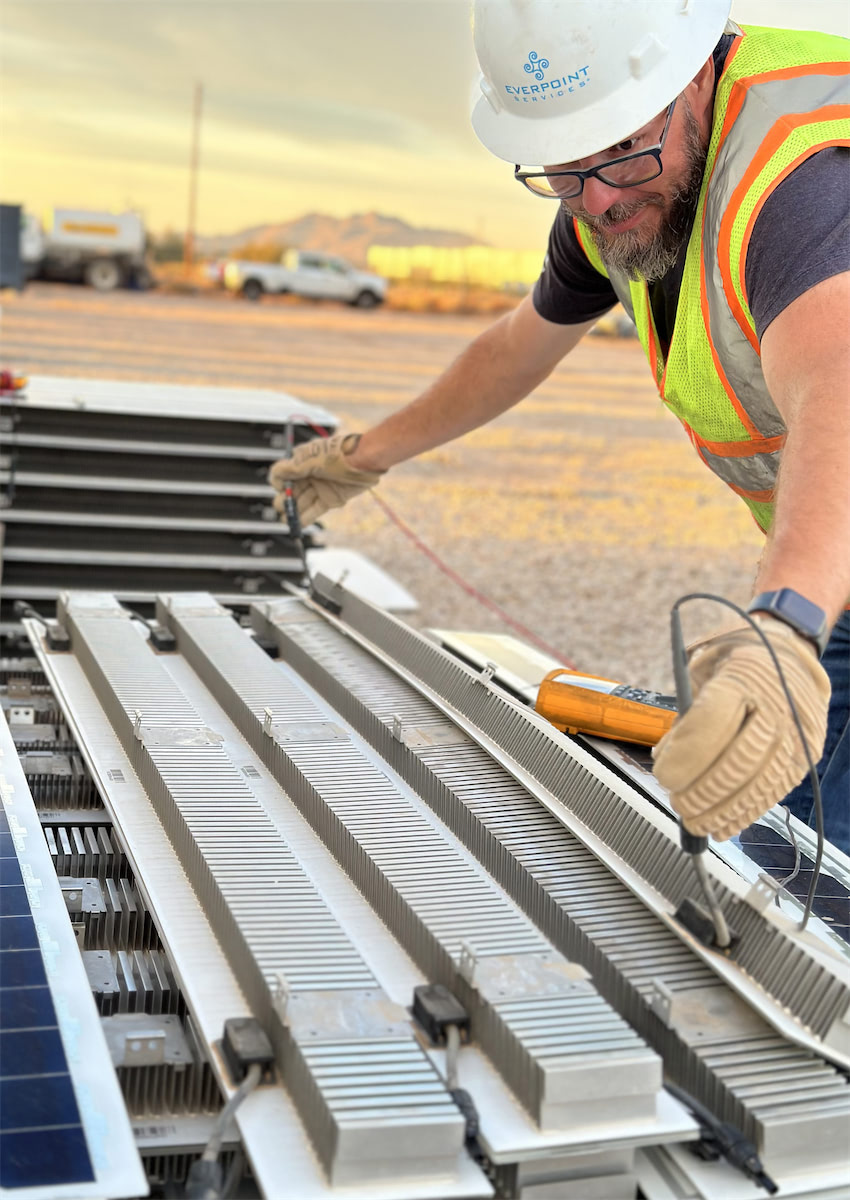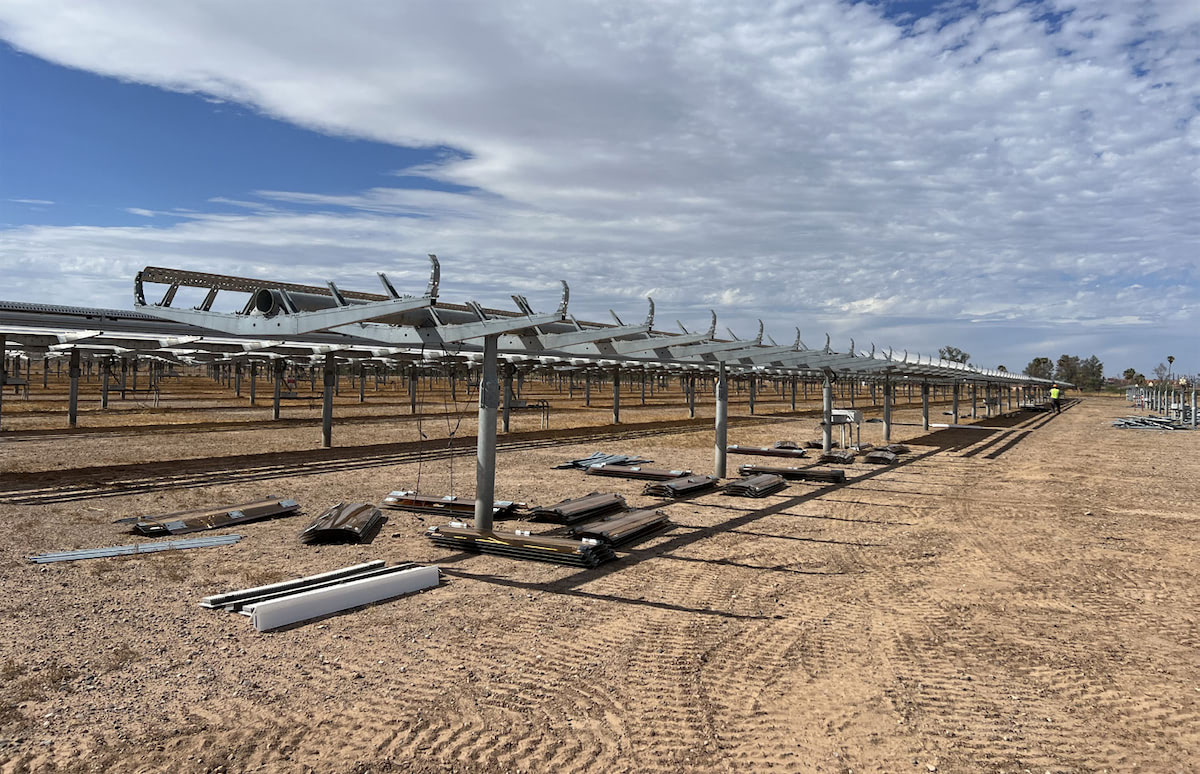Powering the Future by Dismantling the Past: Solar’s End-of-Life Evolution
PES Solar sat down with the executive team at Everpoint Services, Tyler Goodell, Chief Executive Officer; Candace Wood, Chief Operating Officer; David Grobe, Chief Financial Officer and Controller; and James Timmins, Vice President of Engineering, to find out how the company is reshaping solar’s end-of-life strategies. From repowering and remediation to recycling and risk management, they share the business is scaling with purpose in a maturing renewable energy market.
PES: Welcome to PES Solar, it’s great to have you with us. Let’s start with where Everpoint Services is positioned right now in the solar asset lifecycle.
Tyler Goodell: Everpoint is an independent energy services company specializing in demolition and remediation work to support the renewable energy assets in Lower 48. Our services include solar decommissioning, repowering and remediation, as well as wind turbine decommissioning and recycling work. We also offer site preparation and enhancement services tailored to client needs.
By the end of the 2024 calendar year, we had 84 technicians actively working in the field. Everpoint operates a corporate office in Houston, Texas, and maintains a warehouse facility in Wichita Falls, Texas. We are one of the few pure play end-of-life management companies in the United States.
PES: End-of-life services in solar cover a lot of ground, from decommissioning to repowering. Where are you most active at the moment?
Candace Wood: We are currently seeing a significant increase in remediation and repowering work on existing solar assets, which has surpassed the volume of full project decommissioning. This trend is largely driven by the improved cost-benefit ratio that comes with strategically upgrading specific components, such as inverters, modules or racking systems, rather than dismantling entire sites. Asset owners are becoming more focused on maximizing the remaining value of their installations, especially as performance issues emerge over time.
By targeting underperforming or outdated equipment, we’re able to extend the operational life of these assets in a financially and operationally efficient way, often without the regulatory and logistical complexity of starting from scratch. This shift reflects a broader industry move toward lifecycle optimization rather than wholesale removal.
PES: There’s often a decision to be made between full removal, remediation or repowering. How do those conversations usually take shape?
David Grobe: We commit to full transparency with our clients, especially regarding field operations and the financial cost implications of the full removal of a project, a partial remediation of the site or a full repower. When we do this our clients can run the economics of what makes business sense for each project in their portfolio of assets.
This economic conversation goes hand in hand with our operational presence. For a service company, this level of openness becomes a standard that redefines performance, making it impossible to return to anything less than best-in-class.
PES: As sites age, things like inverter performance, racking stability and module degradation become more critical. Which of those tends to lead the process?
CW: Performance economics leads everything we see, apart from safety issues. Solar sites must be producing electrons to make the asset owners’ investment make sense. If inverters or modules are clearly under producing electrons, the site has to undergo a remediation or repower and, in some cases, a full decommission.
PES: Some systems are built to last, while others are not. Are there common patterns you see when evaluating older infrastructure?
CW: We are seeing wear and tear on equipment and infrastructure build which makes sense. These assets have been exposed to harsh elements for many years. We also see installation practices that may have made sense several years ago that require adjustments for current construction or deployment errors that require attention.
PES: Repowering often involves navigating existing grid connections and permits. How do you approach those legacy advantages?
CW: Repowering legacy solar sites presents a unique set of advantages and challenges, particularly regarding existing grid interconnections and permitting. We treat these elements as critical assets in the planning phase. Every project begins with a comprehensive site assessment, where we evaluate both the physical infrastructure and the administrative groundwork already in place. From there, we establish a clear operational timeline and a realistic, transparent budget that reflects the client’s specific goals.
One of the most important steps is mapping out the permitting landscape early. If the site conditions allow, we break down the entire scope of work into detailed tasks so we can identify permitting requirements and initiate those requests well in advance of mobilization. This proactive approach ensures we avoid unnecessary delays and align our engineered solutions with both regulatory expectations and site constraints.


Tyler Goodell

Candace Wood

David Grobe

James Timmins
Leveraging existing grid connections and permits not only streamlines the process but also provides tangible value to the asset owner; it’s a cornerstone of why repowering, when done right, can be so cost-effective and efficient.
PES: When it comes to decommissioning, logistics and cost are obvious factors. Where does technical risk management come into that picture?
DG: Everpoint boasts an execution team capable of thoroughly identifying technical risks in the field, and that reflects the financial burdens of every project. Their deep expertise in safely delivering large-scale projects allows them to be on time and on budget.
PES: Recycling and recovery are gaining ground across the industry. Where do you see the real technical and commercial value emerging?
James Timmins: We see several avenues emerging as the market learns to adapt to aging solar assets. Firstly, how to correctly recover high-value materials from existing projects in a meaningful way. How to pursue a circular economy that makes sense both in ethical standards and in profitability. The opportunities for recycling and recovery are increasing year over year and we want to make sure we are providing our clients with the best case scenarios for both.
PES: Storage is becoming more integrated into legacy sites. How is that changing the end-of-life approach, if at all?
CW: We’re seeing a notable shift in how traditional or legacy energy sites, such as coal, natural gas, or Peaker plants, are being re-evaluated as they approach decommissioning. Rather than being retired and abandoned, many of these sites are now viewed as strategic assets due to their existing grid connectivity and infrastructure. This presents a valuable opportunity to retrofit them with energy storage systems, allowing asset owners to repurpose these locations for modern grid support.
From an end-of-life services perspective, this changes the conversation significantly. It’s no longer just about removal and remediation; it’s also about transformation. Incorporating storage into legacy sites enables a more flexible and forward-looking approach, aligning with both decarbonization goals and evolving energy market demands. We factor these possibilities into our early assessments.
When we see potential for storage integration, we work with clients to develop engineered solutions that leverage the site’s legacy infrastructure while minimizing the need for major new permitting or construction. It’s a strategic advancement that is actively shaping the next chapter of the energy transition.
PES: Looking ahead, as more sites approach 20 to 30 years of operation, where is Everpoint Services focused in terms of scaling and innovation?
TG: Everpoint is special because we are a pure-play end-of-life service company that serves renewables. Our firm specializes in safely decommissioning assets in all renewables, letting us plan end-of-life management practices with them to optimize their portfolio. Our team is positioned correctly both financially and operationally to service solar, wind and storage assets going forward as the largest end-of-life service company in the US.


